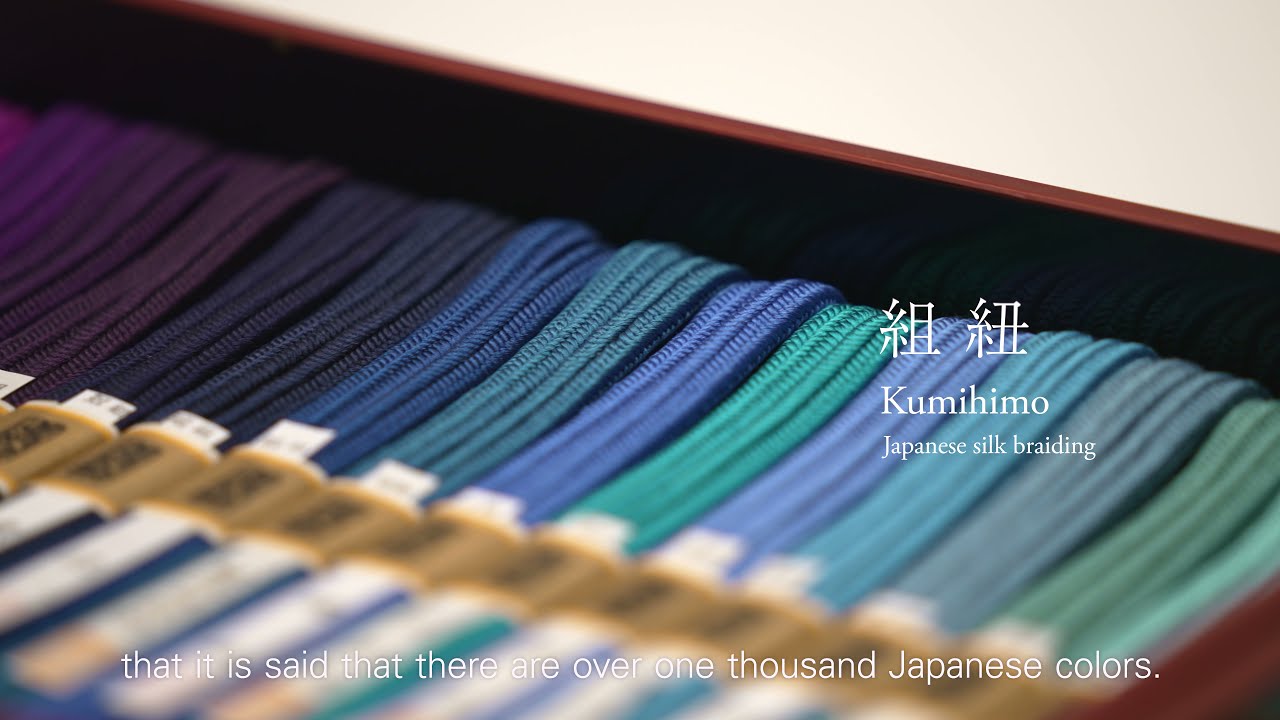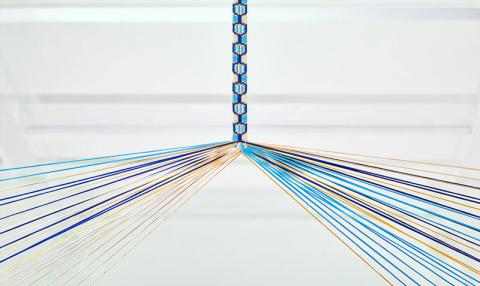
As the old saying goes, “roses are red, violets are blue” – but what if there were countless more shades to choose from? All cultures and languages have their own lexicons for color, but Japan has one of the widest range of terms for the colors of the world around us. Expanding on the common color categories like red and blue, the Japanese language has a set of more than a thousand traditional colors known as dentōshoku. These terms have a vivid poetry of their own, connoting a close relationship with the seasons and environment, as well as serving an important role in cultural and art history, as well as the ways Japanese artisans create and classify their work today.
Unsurprisingly, most of the traditional color names have their origin in the natural world – tied either to careful observation, or to the actual materials used to create dyes and pigments. For example, the catch-all term for green is midori, but there are subcategories of pale scallion green (asagi), fresh sprout green (moegi), old bamboo (oitake-iro), young bamboo (wakatake-iro), and rusty celadon (sabiseiji), to name a few. Then there are the terms that blur the line between the material, color, and dye, such as “beetle red” (enji) and “persimmon amber” (kakishibu, produced from unripe persimmons that have aged for over two years). The flexibility of language allowed for variations on a single color concept, with wittily descriptive results, such as “mouse grey” (nezumi, so named for obvious reasons), which can be altered to describe a greyish purple (budōnezumi, “grape mouse”), or a greyish pink (sakuranezumi, “cherry blossom mouse grey”), etc.
Color can also have profound symbolic meaning and social codes around its use, which evolve over time. For instance, just as in Europe where purple was once reserved for royalty, that color was also forbidden to all but the Imperial family and high-ranking government officials in Japan after the establishment of the Twelve Level Cap and Rank System in the year 604. Though the restriction was eased over the years, it still was a color associated with nobility, thus being banned again during the Edo Period (1603-1868) with sumptuary laws passed by the Tokugawa shogunate to curtail “inappropriate” consumption by the general population. With the rise of urban culture, purple was already becoming fashionable at this time and so common people found a loophole: wearing garments with an exterior layer in dull colors like brown, but a hidden lining of bright colors like purple. Eventually, the prohibition on purple disappeared, but other colors still have strong associations that can direct their use. White (shiro) traditionally symbolized mourning and death, though today a woman (the bride or a guest) might also wear a formal white kimono to a wedding (though perhaps with a brightly-colored obi belt).
Though most people have little reason to use most of the traditional color names in everyday life, the full spectrum of hues is still essential to the work of artists and designers – particularly those who make heritage crafts like ceramics, kimono, or kumihimo (braided cords). As demonstrated in the KUMIHIMO | The Art of Japanese Silk Braiding by DOMYO exhibition at JAPAN HOUSE Los Angeles, for over a thousand years, kumihimo braided silk cords have been made in a stunning array of patterns and colors. At Yusoku Kumihimo Domyo (Domyo), a Tokyo-based firm that has been hand-making kumihimo since 1652, artisans use the seven basic shades of dye (red, blue, yellow, orange, purple, green, and brown) in various combinations to produce several thousands of colors each year for the delicate silk strands that will be braided to become kumihimo.
While no language may ever fully capture the 7 million unique colors that can be recognized by the human eye, the palette of traditional Japanese colors gives us a vocabulary to come closer. From “red fallen leaves” (akakuchiba) to “simmered seaweed” (mirucha), the list of dentōshoku is an inspiring reminder to look closely at the wonders of the natural world around us.
Related Exhibition
KUMIHIMO | The Art of Japanese Silk Braiding by DOMYO

Photo by Yasuhide Kuge
Date
12.11.2021 (Sat.) – 03.06.2022 (Sun.)
Location
JAPAN HOUSE Gallery, Level 2
Fee
Complimentary

